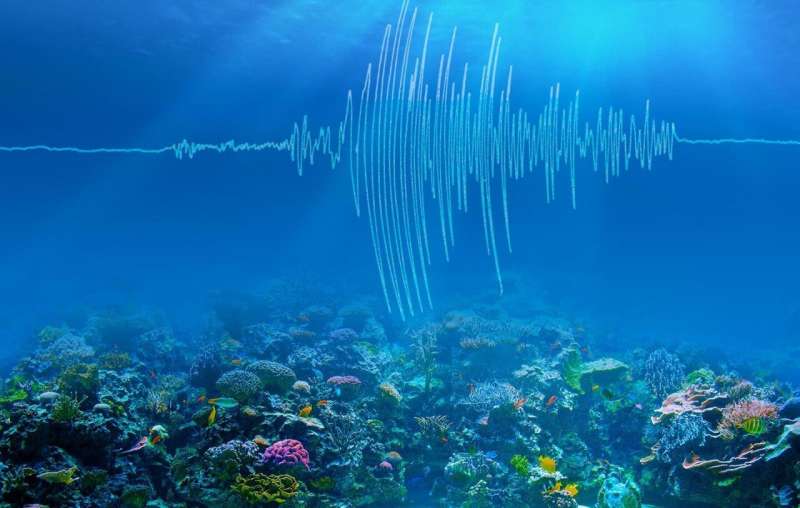September 18, 2020 report
Taking the temperature of the ocean by measuring the speed of sound waves passing through it

A team of researchers from the California Institute of Technology and the Chinese Academy of Sciences has developed a way to detect changes in ocean temperatures by measuring sound waves generated by underwater earthquakes. In their paper published in the journal Science, the group describes how their system works and how well it worked when tested.
As the planet heats up due to global warming, scientists continue to study its impact. One such area of research involves the oceans. Some models have suggested that the world's oceans absorb approximately 90 percent of the excess heat produced due to greenhouse gasses. Unfortunately, because the ocean is so vast and because of the number of variables involved, scientists do not know how much warmer the ocean as a whole has grown.
Back in the 70's, a team at the Scripps Institution of Oceanography proposed the idea of sending sound waves through the water to measure how much heat was in it using a technique they called ocean acoustic tomography. It was based on the idea that warm water transmits sound waves faster than cooler water. It was noted at the time that the technique could be used to measure heat in the ocean from the seafloor to the surface. But the idea was scrapped when environmentalists suggested that sending sound waves through the ocean could harm marine life. In recent years, marine scientists have deployed a fleet of 4,000 temperature sensors around the globe, but they are only able to collect temperature data down to 2,000 meters.
In this new effort, the researchers have visited the idea of using acoustic tomography but rather than generating sound waves, they have used noise that is generated naturally—by earthquakes. For the idea to work, the researchers had to find a stable source of earthquake-generated sound waves. That led them to use what are known as "repeaters"—earthquakes that occur at the same location and with the same energy levels on a regular basis. After identifying 2,000 such repeaters (that had been recorded) occurring over the years 2005 to 2016, the researchers measured changes in the time it took for sound waves to travel from a location in Indonesia to a sensor station on the island of Diego Garcia. In looking at the data, they found that water temperature had increased by an average of 0.044 degrees Celsius per decade—very close to what floating temperature sensors have suggested.
More information: Wenbo Wu et al. Seismic ocean thermometry, Science (2020). DOI: 10.1126/science.abb9519
Carl Wunsch. Advance in global ocean acoustics, Science (2020). DOI: 10.1126/science.abe0960
Journal information: Science
© 2020 Science X Network





















